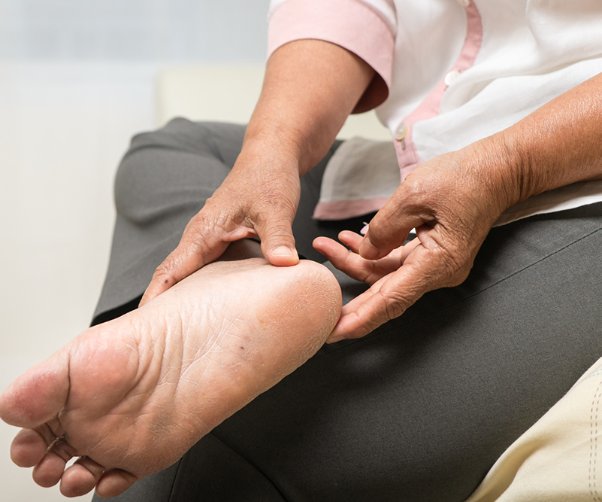
How diabetes can increase the risk of limb amputation
If you’re living with diabetes, you are at an increased risk for lower limb amputation. Nearly two million people in the United States are living with limb loss, and diabetes is a leading cause of amputation. Poorly controlled diabetes can lead to many potential complications — including nerve damage, such as diabetic neuropathy, and circulation issues, such as peripheral artery disease.
Diabetic Neuropathy
Diabetic neuropathy is nerve damage that can cause you to lose feeling, feel sharp pains and or experience tingling in your legs and feet. Researchers believe this nerve damage is caused by high blood sugar levels, and the loss of feeling can prevent you from realizing you have injured your legs or feet.
Peripheral Artery Disease
Peripheral artery disease (PAD) is a narrowing of the peripheral arteries caused by a build-up of fatty deposits that supply blood to the legs and arms. PAD most commonly affects the legs. The decreased blood flow to your limbs can increase your risk of infection. If the blockage is severe enough, it could lead to gangrene and limb loss.
SUBSCRIBE TO OUR BLOG
and you'll receive more health & wellness tips right in your inbox.
SUBSCRIBE NOWHow to Prevent Complications and Limb Loss
The good news is amputations are preventable with proper diabetes management, foot care and wound care. Attend your regularly scheduled doctor’s appointments and have your A1C measured as often as your provider recommends (usually at least twice a year). Keep your blood sugar levels within a normal range through diet and medication, if needed, and get regular exercise.
Maintain proper foot and leg care by inspecting your feet and legs for wounds on a daily basis. If you notice a wound, it’s important to keep pressure off the area and keep your wound dressing fresh to prevent bacteria growth and infection. Talk to your doctor about appropriate dressing for your particular wound.
How We Can Help
For additional support in understanding and managing your diabetes, consider attending one our diabetes education classes. These classes are free to anyone living with diabetes and provide a way to connect with others living with diabetes and learn how to take medications, eat healthier and make lifestyle changes.
If you have a wound that won’t heal, contact the Limb Preservation Center for treatment. Our Center has a multidisciplinary team of experts who are ready to treat your limb-threatening condition through evaluations, personalized education and treatment plans, timely consultations with specialists and continued support throughout the healing process.
Still Have Questions About Your Overall Health?
Schedule an appointment with one of our primary care physicians.
NCBI — Factors affecting lifespan following below-knee amputation in diabetic patients
Amputee Coalition — Limb Loss Statistics
Related Articles


